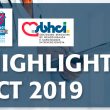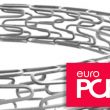1- AHA 2019 | ISCHEMIA: The Invasive Approach (PCI or Surgery) Results Similar to Optimal Medical Treatment After a several year follow up, the International Study of Comparative Health Effectiveness with Medical and Invasive Approaches (ISCHEMIA) has shown that an invasive approach in addition to optimal medical treatment (OMT) does not offer benefits when it<a href="https://solaci.org/en/2019/12/02/the-most-read-articles-of-november-at-solaci-org/" title="Read more" >...</a>
The Road Towards a “More Perfect” Angioplasty Is Already Being Traveled
The aim of revascularization, whether through angioplasty or surgery, is to restore adequate flow to the myocardium; that much is obvious. However, after millions of “successful” procedures with the best technology applied to drug-eluting stents and optimal medical treatment, we still have a high ratio of patients who experience new events. Could an optimal angiographical<a href="https://solaci.org/en/2019/11/11/the-road-towards-a-more-perfect-angioplasty-is-already-being-traveled/" title="Read more" >...</a>
The Most Read Scientific Articles of October in Interventional Cardiology
1- Incidence and Prognosis of Heart Valve Embolization The incidence of peri-procedural transcatheter heart valve embolization and migration (TVEM) is as low as 1%. However, it is associated with increased morbidity and mortality. Read more HERE 2- 1000 MitraClips: Results from the World’s Most Experienced Site In September 2008, interventional physicians at the Heart and<a href="https://solaci.org/en/2019/11/07/the-most-read-scientific-articles-of-october-in-interventional-cardiology/" title="Read more" >...</a>
TCT 2019 | EXCEL: Left Main Coronary Artery Angioplasty with Favorable Results at 5 Years
Courtesy of Dr. Carlos Fava. Unprotected left main coronary artery angioplasty with drug-eluting stents has emerged as an acceptable strategy for a select group of patients, with results comparable to those of myocardial revascularization surgery at 2 or 3 years. However, beyond such term, we had no valid information. Researchers analyzed the 5-year follow-up results for the<a href="https://solaci.org/en/2019/10/01/tct-2019-excel-left-main-coronary-artery-angioplasty-with-favorable-results-at-5-years/" title="Read more" >...</a>
Thin, Very Thin, and Ultrathin Struts, with Permanent or Biodegradable Polymer… Which Is the Best Combination?
Results from the BIO-RESORT trial at three years, soon to be published in JACC Intv., show that, despite significant differences among stents as regards strut thickness and capability to reabsorb the polymer, there are no apparent safety or efficacy differences among devices. The aim of this study was to determine the three-year safety and efficacy<a href="https://solaci.org/en/2019/09/18/thin-very-thin-and-ultrathin-struts-with-permanent-or-biodegradable-polymer-which-is-the-best-combination/" title="Read more" >...</a>
EuroPCR 2019 | BASKET-SMALL 2: Drug-Coated Balloons vs. DES in Small Vessels
This angiographic substudy supports the safety of drug-coated balloons in small vessels. Despite better angiographic outcomes, there were eight cases of stent thrombosis among drug-eluting stent (DES) patients, while there was none with drug-coated balloons. In patients with small vessels, using a drug-coated balloon appears safe and comparable to DES, with favorable angiographic outcomes at<a href="https://solaci.org/en/2019/05/27/europcr-2019-basket-small-2-drug-coated-balloons-vs-des-in-small-vessels/" title="Read more" >...</a>
EuroPCR 2019 | BIO-RESORT and SCAAR Registry: Ultrathin Struts Also in Small Vessels pequeños
Data from randomized studies are also supported by the SCAAR registry, in which ultrathin-strut stents show real-world advantages. Patients with small vessels who received ultrathin-strut stents are less likely to undergo revascularization at 3 years than those who received first-generation thin-strut devices, according to the BIO-RESORT trial, presented during the first day of the annual<a href="https://solaci.org/en/2019/05/23/europcr-2019-bio-resort-and-scaar-registry-ultrathin-struts-also-in-small-vessels-pequenos/" title="Read more" >...</a>
The Most Read Scientific Articles in Interventional Cardiology
1- Long-Term Foramen Ovale Closure after Cryptogenic Stroke Patent foramen ovale closure is the standard treatment for cryptogenic stroke patients. However, there are is little information on its long-term evolution. Read more 2- Descending Thoracic Aortic Aneurysms: Is There a New Plan A? The last available evidence suggests that open surgery should be the<a href="https://solaci.org/en/2019/05/03/the-most-read-scientific-articles-in-interventional-cardiology/" title="Read more" >...</a>
Subclavian and Axillary Access for TAVR: a Valid Alternative
Courtesy of Dr. Carlos Fava. The femoral approach is preferred when it comes to TAVR, but sometimes it is not viable. This is when other access sites come into play, such as the trans-subclavian/axillary (TS/TAx), the apical, transcaval, transcarotid (TC) or transaortic. At present, few studies have looked into this matter, which is why it<a href="https://solaci.org/en/2019/04/11/subclavian-and-axillary-access-for-tavr-a-valid-alternative/" title="Read more" >...</a>
DES and DCB with Similar Results in Femoropopliteal Artery Disease
Courtesy of Dr. Carlos Fava. Nowadays, peripheral interventions are on the rise and the technological development of stents and balloons would help achieve better outcomes. Both drug-eluting stents (DES) and drug-coated balloons (DCB) have proved to be beneficial for femoropopliteal interventions, but the actual role of each of these technologies remains unclear. This prospective, randomized 1:1<a href="https://solaci.org/en/2019/04/01/des-and-dcb-with-similar-results-in-femoropopliteal-artery-disease/" title="Read more" >...</a>









